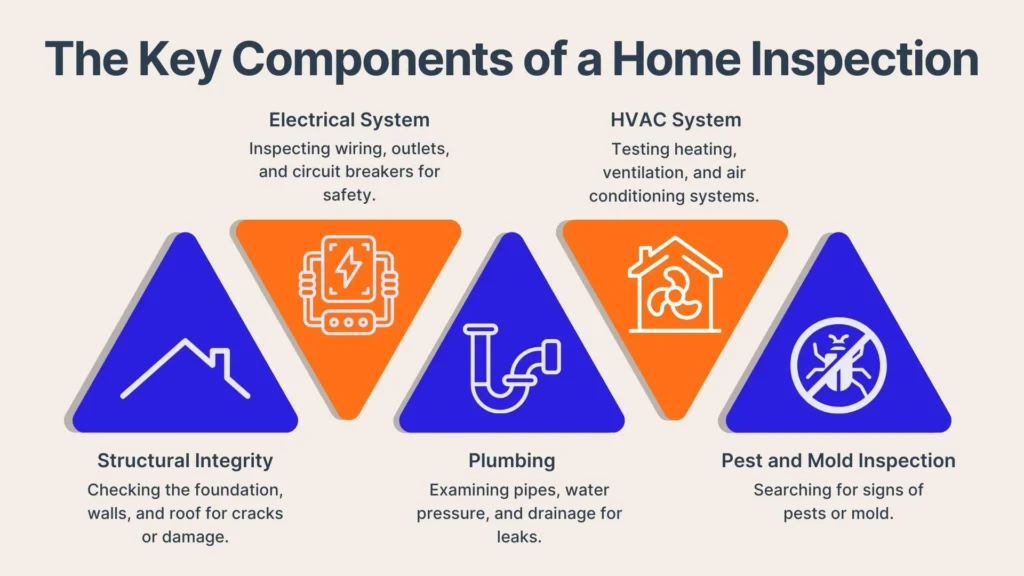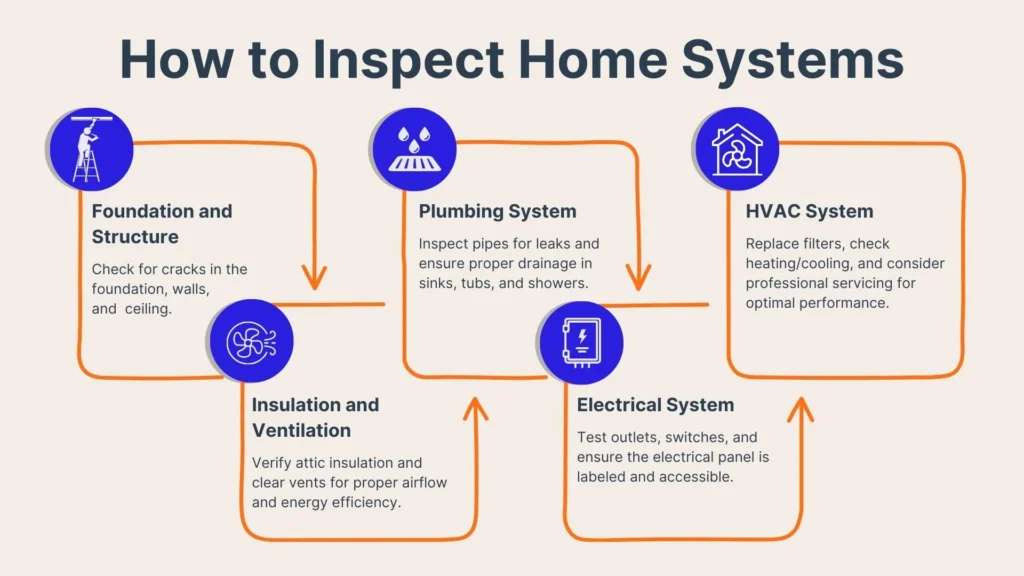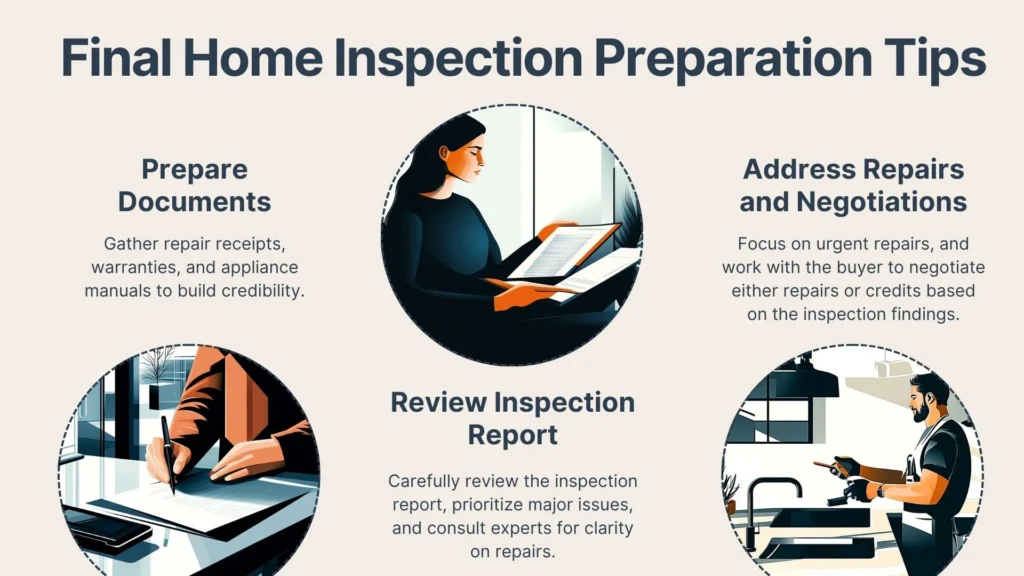Selling your home as a For Sale By Owner (FSBO) can be empowering and a smarter financial choice, allowing you to take control of the process and save on costly realtor commissions. However, one pivotal factor can make or break your sale: a home inspection. Without proper preparation, even minor issues can lead to delays, unexpected costs, or lost deals.
In this guide, we’ll walk you through the steps to prepare for a home inspection and make a strong impression on potential buyers. From decluttering and cleaning to addressing repairs and organizing key documents, you’ll learn how to present your home in its best light.
What Is A Home Inspection?
A home inspection is a careful assessment of a property's condition conducted by a licensed inspector. The inspector evaluates the structure, systems, and components to confirm that everything is working properly. Buyers often request an inspection to identify potential issues and measure how compatible the property is with the buyer before finalizing their purchase.
The results of a home inspection can influence negotiations, as buyers may request repairs or a price adjustment based on the findings.

Why Preparing For A Home Inspection Is Crucial
A well-prepared home inspection can streamline the selling process and reduce the chances of surprises. Here are some key reasons why you should take pains to prepare for one:
- Create a Positive First Impression: A clean, well-maintained home signals buyers that it has been cared for.
- Avoid Delays in Closing: Resolving potential issues before the inspection helps prevent last-minute obstacles.
- Strengthen Buyer Confidence: A smooth inspection reassures buyers, fosters trust, and potentially could create an opportunity for repeat business.
Taking these proactive steps can make the home inspection process stress-free and efficient for all parties involved.
Initial Steps For Home Inspection And Preparation
Before diving into decluttering and cleaning, it is important to establish a solid foundation for your home inspection. Start by assessing the entire space to identify problem areas and prioritize tasks. With a clear-cut plan, you’ll streamline the process. Here are the initial steps you should take and consider:
Declutter and Clean Every Room, Closet, And Storage Area
A clean and organized home sets the stage for a fresh start. Create a welcoming and efficient space by sorting, donating, or discarding unused items, ensuring every area is tidy and ready for use.
Begin by decluttering all areas of your home, including closets, storage rooms, and cabinets. Remove personal items and unnecessary belongings to create a spacious, organized environment. A clutter-free space allows inspectors to access key areas easily and helps buyers visualize themselves in the home.
Perform A Thorough Cleaning Of The House
A spotless home creates a great first impression. Focus on cleaning floors, windows, and countertops until they shine. Don't forget to check every nook and cranny.
Dust every light fixture, baseboard, and ceiling fan to remove accumulated dust and dirt. Additionally, clear and unobstructed paths to essential parts of the home such as the attic, basement, and utility closets are a big bonus to convenience and could make or break a sale.

Make Minor Repairs
Minor repairs prevent bigger issues and enhance the functionality and aesthetics of your home. Fix leaks, patch up damaged walls, repaint scuffed surfaces, and tighten loose handles or knobs.
Addressing minor repairs ahead of time can prevent small issues from becoming negotiation hurdles and long-term headaches. Fixing leaky faucets or toilets should be a high priority, as these can signal neglect to buyers.
Lastly, repair damaged walls and repaint them with neutral colors to create a blank canvas for the buyer. These small but impactful improvements add value and maintain your home’s integrity.
Ensure All Utilities Are Functional
Reliable utilities are essential for a well-maintained home. Check that all systems, including plumbing, electricity, and HVAC, are fully operational. Address any issues promptly to promote safety, comfort, and efficiency for daily living or potential visitors.
Make sure all utilities are in working order to avoid red flags during the inspection and give your client less hassle to deal with. Test water fixtures for proper pressure distribution and consistent temperature for the heaters. Confirm that all electrical outlets and light switches function correctly, replacing faulty components as needed.
Focus Areas For The Inspection
When preparing for a home inspection, you need to keep in mind the key focus areas that are of greatest importance to a potential buyer. Among the most important is the foundation and structural integrity of your property. These elements form the backbone of your home’s stability and safety, making them a top priority for inspectors and potential buyers.

Foundation And Structural Integrity
The foundation and structure of your home are critical to the inspection. Inspect the roof for any damage, missing shingles, or signs of wear that may require attention. Check attic spaces for leaks, pests, or water damage to ensure they are in good condition.
Examine walls, ceilings, and floors carefully for any cracks or indications of structural issues. Proactively addressing these concerns can help avoid costly repair requests and instill buyer confidence.
Inspect Insulation And Ventilation
Proper insulation and ventilation almost always means energy efficiency and excellent indoor air quality. During your preparation, check the insulation levels in the attic and crawl spaces to confirm they meet proper safety standards. Vents and fixtures of that nature should be double-checked for maximum functionality.
You should also maintain or replace HVAC vents if the need arises to enhance airflow throughout the home. Efficient systems improve comfort but also reassure buyers of lower utility costs.
Plumbing System Health
Inspect your plumbing system to prevent leaks or water damage from derailing the sale. Examine pipes throughout the home for signs of corrosion, leaks, or other issues that may need repairs.
Heaters should also be part of your checklist; see if they are in working order and provide consistent hot water. Check sinks, tubs, and showers for proper drainage and address any clogs or slow-draining fixtures.
Electrical System Functionality
A functional electrical system is a must for any comfortable home, flickering lights and faulty sockets are inconveniences that everyone wants to avoid. Ensure that your house’s electrical system is functional and powering all the necessary electrical fixtures for a successful home inspection. You can start by testing all electrical outlets and light switches throughout the house to confirm they are in working order.
Make sure the electrical panel is easily accessible and clearly labeled. Address any exposed wiring or malfunctioning components before the inspection to eliminate potential safety concerns.
HVAC System Efficiency
A properly functioning HVAC system is vital to the comfort and appeal of your home. Replace filters to clean airflow and check the system’s heating and cooling efficiency. Schedule a professional service if needed to address any performance issues.
Demonstrating a well-maintained HVAC system reassures buyers that it is both energy-efficient and reliable, which adds value to your property. Double-checking that the HVAC is well-maintained could also motivate buyers with underlying health conditions to invest knowing that the home has proper filtration.
Documents To Prepare For The Inspector
Having the right documents ready for the inspector not only optimizes the process but also builds credibility with potential buyers. Start with repair and maintenance receipts, as these provide tangible proof of the care and attention you've invested in your home.
Repair And Maintenance Receipts
Once the inspection is complete, carefully review the report to understand the findings. Take note of any major issues, minor concerns, and recommendations for maintenance or repairs. If necessary, consult with a contractor or specialist to better understand the scope of certain issues. Understanding the report thoroughly ensures you are well-prepared for the next steps and allows you to confidently address the buyer’s concerns.
Warranties And Guarantees For Home Components
Organize warranties and guarantees for major appliances, systems, or recent installations, like roofing or HVAC units. Presenting these documents can give buyers peace of mind regarding the reliability and longevity of key components.
Highlight transferable warranties, as they add significant value for buyers. Don’t forget to include details about warranty coverage and expiration dates, showcasing the ongoing protection buyers will receive.
Manuals For Appliances And Systems
Compile manuals for all appliances and systems in the home, such as the dishwasher, HVAC, and security system. Providing these resources demonstrates a commitment to transparency and helps buyers feel equipped to manage the property after purchase.
Include documentation on any advanced features or unique instructions for operation. This attention to detail can set your home apart and make buyers more comfortable with their decisions.

Post-Inspection Actions
Now that the home inspection is complete, it’s time to take charge of the findings and turn them into an opportunity to solidify your sale. A detailed review of the inspection report lets you confidently prioritize key actions, and demonstrate your commitment to delivering a home buyers can trust.
Here’s how to make the most of this crucial step:
Review The Inspection Report In Detail
Once the inspection is complete, carefully review the report to understand the findings. Take note of any major issues, minor concerns, and recommendations for maintenance. If necessary, consult with a contractor or specialist to better understand the scope of certain issues. Thoroughly reviewing the report allows you to create a prioritized action plan, address buyer concerns effectively, and avoid potential misunderstandings.
Prioritize Repairs Based On Report
Determine which issues require immediate attention and possible aftercare, such as following up with clients, providing a list of contractors, and keeping an open line of communication. Focus on addressing significant problems that may impact the sale, while considering the cost-effectiveness of each repair.
Negotiate Repairs Or Credits With The Buyer
Work collaboratively with the buyer to address inspection findings. Discuss options such as making repairs, or adjusting the sale price to accommodate their concerns. For example, if the inspection reveals a leaky roof, you may want to prioritize repairing it or offer credit for the buyer to handle it post-sale.
Clear communication and a willingness to compromise are essential for maintaining a positive relationship with the client and keeping the sale on track. Be prepared to justify your decisions with supporting documentation or contractor estimates.
Conclusion
Preparing for a home inspection is vital for FSBO sellers. Taking the time to clean, and polish the property will create a better experience for both the inspector and potential buyers. Focus on key areas like structural integrity, insulation, plumbing, and electrical systems to showcase the value of your home. You should collect important documents and review the inspection report to facilitate smooth negotiations.
Home inspections don’t have to derail your FSBO journey. Propbox’s tools help you stay organized, automate reminders, and guide you through every step of the process. With AI-powered insights and a transparent platform, you can prepare confidently, sell faster, and for more. Prepare like a pro and sign up for Propbox now!
